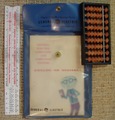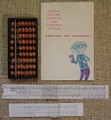analog or digital?

explaining how GE made both analog & digital computers




This is before area codes!
They list the exchanges by name!


"bi-quinary is found in some modern digital computers also"
"for more advanced instruction …
write to one of our abacus-expert Sales Engineers"


The S, T and L scales must've been an RFQ :-)

Phoenix, Arizona (no zip code yet!)
Apparently printed August 1960


(with slide removed to see inner printing)


(to show additional conversion charts)

but I poked it into the case
since it's so similar to the GE slide rule.
It adds the K scale for cubes.
I removed the magnifying cursor for scanning.


 Sales brochure
Sales brochure